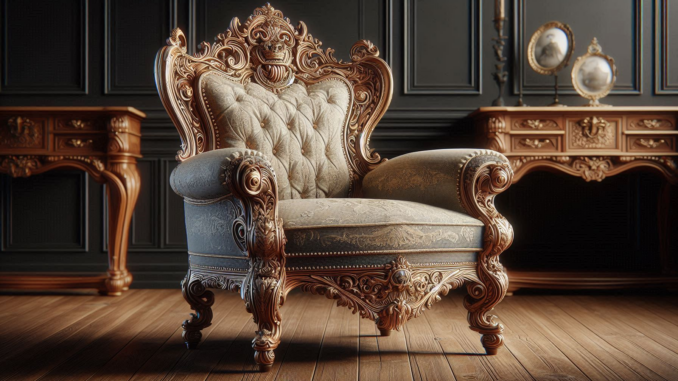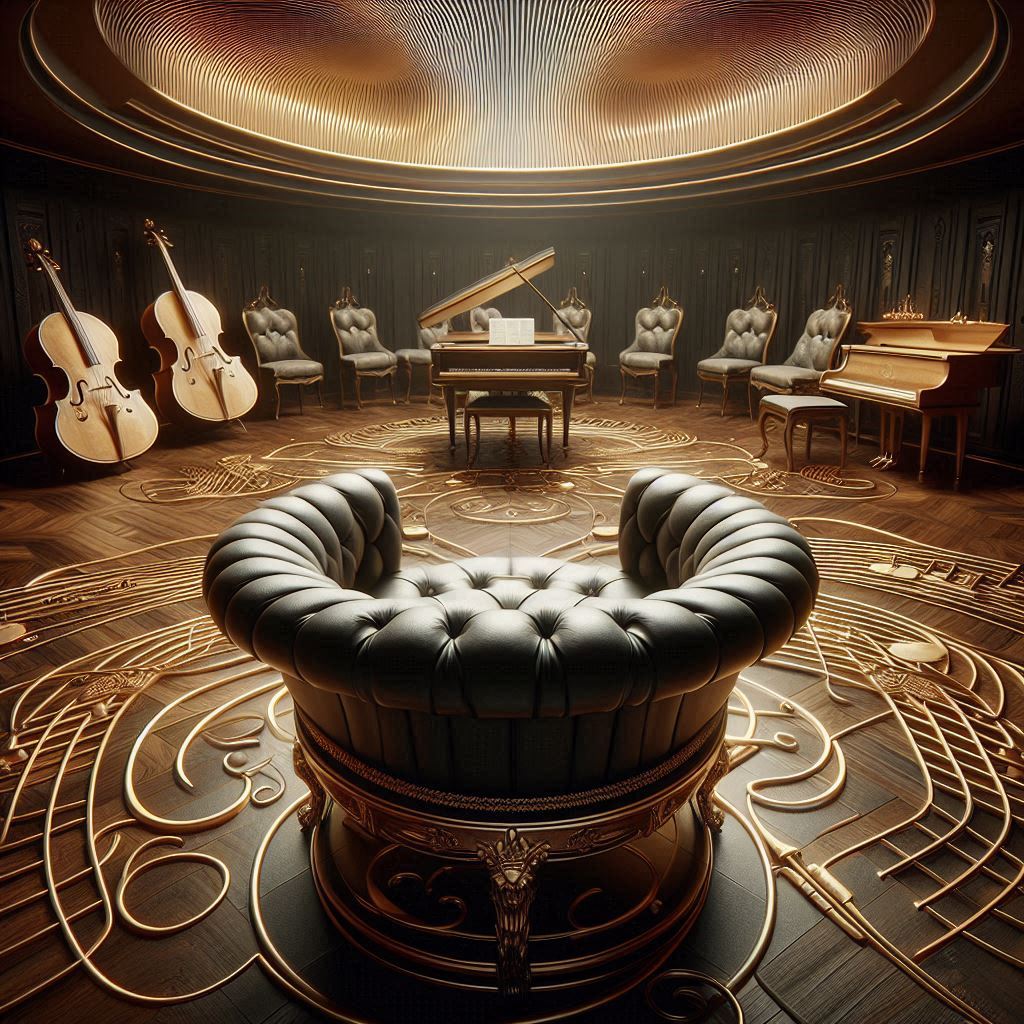
How Old Is My Antique High Chair?
Ever wondered about the age of that beautiful old high chair sitting in your attic or passed down through your family? You’re not alone! Many folks find themselves captivated by the charm and history of antique furniture, especially when it comes to pieces as meaningful as high chairs. In this post, we’ll dive deep into the world of antique high chairs and help you uncover the secrets of your cherished piece’s age.
Quick Answer
The age of an antique high chair can be determined by examining its materials, construction techniques, design style, and any maker’s marks. Typically, high chairs over 100 years old are considered antique, with most sought-after pieces dating from the 19th to early 20th centuries.
My Journey with an Antique High Chair
Before we dive into the nitty-gritty, let me share a little story. A few years back, I stumbled upon an old high chair at a yard sale. It was love at first sight! The worn wood, the intricate carvings – I just had to have it. Little did I know, this impulse buy would spark a fascinating journey into the world of antique furniture.
“I remember the moment I saw it,” I often tell my friends. “It was tucked away in the corner, covered in dust. But even then, I could see its potential. The seller said it was ‘old’, but I wanted to know just how old.”
That curiosity led me down a rabbit hole of research, expert consultations, and even a few surprises along the way. Now, I’m excited to share what I’ve learned with you!

1. Understanding the Basics of Antique High Chairs
Before we roll up our sleeves and start investigating, let’s cover some ground rules about antique high chairs.
What Makes a High Chair “Antique”?
In the world of collectibles, the term “antique” isn’t thrown around lightly. Generally speaking, an item needs to be at least 100 years old to earn this prestigious title. So, if your high chair dates back to the 1920s or earlier, congratulations! You’ve got a genuine antique on your hands.
Why Are Antique High Chairs Special?
Antique high chairs aren’t just old pieces of furniture – they’re time capsules. Each one tells a story about the era it came from, the family that used it, and the craftspeople who made it. They can give us glimpses into past childcare practices, design trends, and even social norms.
2. Key Features to Look For
When trying to date your antique high chair, there are several key features you’ll want to examine closely.
Materials Matter
The type of wood used in your high chair can be a big clue about its age. Here’s a quick rundown:
- Oak: Popular in the late 19th and early 20th centuries
- Walnut: Common in Victorian-era furniture (mid to late 19th century)
- Mahogany: Often used in higher-end pieces from the 18th and early 19th centuries
- Pine: Frequently used in more rustic or budget-friendly pieces throughout history
Design Details
The style and decorative elements of your high chair can speak volumes about its age. Keep an eye out for:
- Hand-carved details (often seen in older pieces)
- Turned legs and spindles (common in many antique styles)
- Painted designs or stenciling (popular in certain periods)
Construction Techniques
How your high chair was put together can be a dead giveaway of its age. Look for:
- Hand-cut dovetail joints (a sign of older, handmade furniture)
- Wooden pegs or nails (often used before modern screws became common)
- Signs of hand planing on the wood (indicates pre-industrial craftsmanship)
3. Researching Your High Chair’s History
Now that you know what to look for, it’s time to dig deeper into your high chair’s past.
Hit the Books (and the Web)
Start your research journey with these resources:
- Antique furniture reference books (your local library is a great place to start)
- Online antique databases and forums (websites like Kovels.com can be goldmines of information)
- Old furniture catalogs (often available in digital archives)
Connect with Experts
Sometimes, nothing beats expert advice. Consider:
- Consulting with an antique appraiser
- Joining local antique clubs or societies
- Attending antique shows and talking to dealers
4. Dating by Design: A Style Guide
Different eras had distinct furniture styles. Here’s a quick guide to help you narrow down your high chair’s age based on its look:
Victorian Era (1837-1901)
- Ornate designs with lots of carved details
- Dark woods like mahogany and walnut
- Often featuring curved lines and plush upholstery
Arts and Crafts Movement (1880-1920)
- Simple, clean lines
- Emphasis on natural wood grain
- Often made of oak
- Minimal decoration, focusing on quality craftsmanship
Art Nouveau (1890-1910)
- Flowing, organic lines
- Nature-inspired motifs like flowers and vines
- Often incorporating curved wood and decorative inlays
5. The Devil’s in the Details: Examining Construction
How your high chair was put together can tell you a lot about when it was made.
Joinery Techniques
Look closely at how the pieces of your high chair are connected:
- Hand-cut dovetail joints suggest a piece made before 1860
- Machine-cut dovetails became more common after the 1860s
- Mortise and tenon joints have been used for centuries and can be found in many antique pieces
Nails and Screws
The fasteners used in your high chair can be telltale signs of its age:
- Hand-forged nails indicate a piece made before the 1800s
- Cut nails were common from the early 1800s to the 1880s
- Wire nails, similar to modern nails, became widespread after the 1880s
- Screws with pointed tips and irregular threads suggest a piece made before 1850
6. Detective Work: Finding and Decoding Maker’s Marks
Many antique high chairs bear the mark of their maker, which can be a goldmine of information for dating your piece.
Where to Look
Maker’s marks can be sneaky – here’s where to search:
- Underneath the seat
- On the back of the chair
- Inside drawers or compartments (if your high chair has any)
- On the underside of trays or removable parts
Types of Marks
Maker’s marks come in various forms:
- Stamps pressed into the wood
- Paper labels (though these may have worn off over time)
- Metal plaques
- Carved or branded marks
Decoding the Mark
Once you’ve found a mark, it’s time to play detective:
- Research the manufacturer’s history to get a date range for your piece
- Look for changes in the company’s name or logo over time, which can help pinpoint the age
- Check online databases of furniture makers’ marks for matches
7. The Bigger Picture: Historical Context
Understanding the historical context can provide valuable clues about your high chair’s age.
Societal Trends
The popularity of high chairs has ebbed and flowed throughout history:
- High chairs became more common in middle-class homes during the Victorian era
- The early 20th century saw a boom in mass-produced high chairs
- Design trends often reflected broader societal changes (e.g., simpler designs during wartime)
Technological Advancements
Keep in mind how technology might have influenced your high chair’s construction:
- The Industrial Revolution led to more standardized, machine-made parts
- New materials (like early plastics) started appearing in the early 20th century
- Safety features evolved over time, with major changes in the mid-20th century
8. Putting It All Together: A Case Study
Let’s walk through an example of dating an antique high chair, step by step.
Imagine we have a high chair with these characteristics:
– Made of oak with simple, clean lines
– Hand-cut dovetail joints
– A paper label from the “Stickley Brothers Company”
– An adjustable foot rest
Based on these clues, we can deduce:
- The oak construction and simple design suggest an Arts and Crafts style (1880-1920).
- Hand-cut dovetails indicate it was likely made before mass production techniques became widespread.
- The Stickley Brothers Company was active from 1891 to 1954, but their Arts and Crafts furniture was most popular in the early 1900s.
- Adjustable features became more common in the early 20th century.
Putting this all together, we can estimate that this high chair was likely made between 1900 and 1920.
9. Caring for Your Antique High Chair
Now that you’ve unraveled the mystery of your high chair’s age, it’s important to know how to care for it properly.
Cleaning and Maintenance
- Dust regularly with a soft, dry cloth
- Avoid harsh chemicals or excess water, which can damage old wood
- For deeper cleaning, consult a professional restorer
Preservation Tips
- Keep your high chair out of direct sunlight to prevent fading
- Maintain a stable environment – avoid areas with high humidity or temperature fluctuations
- If your chair has original upholstery, consider having it professionally cleaned and preserved
10. The Value of Your Antique High Chair
While the sentimental value of an antique high chair is priceless, you might be curious about its monetary worth.
Factors Affecting Value
- Age: Generally, older pieces are more valuable
- Condition: Well-preserved chairs command higher prices
- Rarity: Unique or uncommon designs can be more valuable
- Maker: High chairs from renowned manufacturers often fetch higher prices
Getting an Appraisal
For an accurate valuation:
- Consult a professional antique appraiser
- Check recent auction results for similar pieces
- Remember that value can fluctuate based on market trends
11. Conclusion: The Timeless Appeal of Antique High Chairs
Determining the age of your antique high chair is more than just a fun puzzle – it’s a journey through history. Each scratch, worn edge, and faded finish tells a story of the families and children who used it over the years.
Whether your high chair turns out to be a rare Victorian treasure or a charming early 20th-century piece, the process of uncovering its history can be deeply rewarding. It connects us to the past, to the craftspeople who created these enduring pieces, and to the generations of families who gathered around them.
So, the next time you look at your antique high chair, remember – you’re not just seeing an old piece of furniture. You’re looking at a slice of history, a testament to craftsmanship, and a link to countless family moments from long ago.

Next Steps
Ready to continue your antique adventure? Here are some suggestions:
- Document your findings about your high chair – take photos and notes for future reference
- Consider joining an antique furniture club to connect with other enthusiasts
- Explore other pieces of antique furniture in your home or family
- Share your high chair’s story with family members to keep its history alive
Remember, every antique has a story to tell. By uncovering the age of your high chair, you’re not just satisfying curiosity – you’re becoming part of its ongoing story. Happy investigating!


Leave a Reply